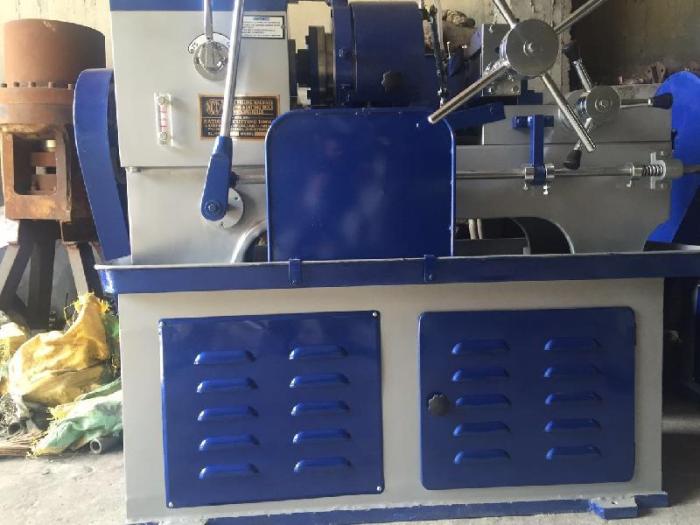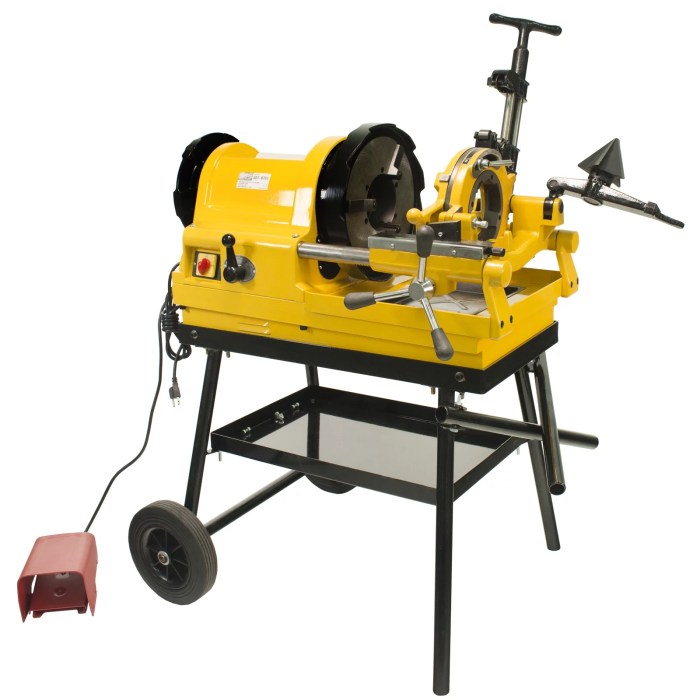Threading machines are available to thread conduit from a variety of materials, including steel, aluminum, and PVC. These machines can be used to create threads on the ends of conduit, which allows them to be connected to other components, such as fittings and boxes.
Threading machines come in a variety of sizes and types, and they can be used for a variety of applications.
In this guide, we will discuss the different types of threading machines available, the methods used to thread conduit, the materials that can be threaded, and the safety considerations that must be taken when using threading machines. We will also provide tips for troubleshooting common problems that can occur when using threading machines.
Thread Conduit Machines

Thread conduit machines are essential tools for creating threaded connections in conduit systems. These machines allow for the secure and efficient installation of electrical conduit, ensuring the safety and reliability of electrical systems.
Types of Threading Machines

There are several types of threading machines available, each with its own advantages and disadvantages:
- Benchtop Threading Machines:Compact and portable, these machines are ideal for small-scale applications. They are manually operated and can handle conduit sizes up to 2 inches.
- Portable Threading Machines:Designed for on-site use, these machines are lightweight and easy to transport. They offer greater power than benchtop models and can handle conduit sizes up to 4 inches.
- Hydraulic Threading Machines:Utilizing hydraulic power, these machines are the most powerful and versatile option. They can handle large conduit sizes (up to 8 inches) and are suitable for high-volume applications.
- Automatic Threading Machines:These machines automate the threading process, increasing efficiency and reducing labor costs. They are typically used in industrial settings and can handle a wide range of conduit sizes.
Conduit Threading Methods: Threading Machines Are Available To Thread Conduit From
The process of threading conduit involves several steps:
- Preparation:The conduit is cut to the desired length and deburred to remove any sharp edges.
- Threading:The conduit is placed in the threading machine, which uses a rotating die to create the threads.
- Finishing:The threads are cleaned and lubricated to ensure a smooth connection.
Conduit Materials and Compatibility

Different types of conduit materials are available, each with its own characteristics and compatibility with threading machines:
- EMT (Electrical Metallic Tubing):A lightweight and flexible conduit made of galvanized steel. It is compatible with all types of threading machines.
- IMC (Intermediate Metallic Conduit):A heavier and more rigid conduit made of galvanized steel. It is compatible with all types of threading machines.
- PVC (Polyvinyl Chloride):A non-metallic conduit that is resistant to corrosion and UV radiation. It can be threaded using specialized PVC threading machines.
Safety Considerations
Using threading machines involves potential hazards:
- Rotating Parts:The rotating dies can cause injuries if proper precautions are not taken.
- Pinch Points:The conduit can become pinched during threading, causing injuries to hands.
- Electrical Hazards:Electrical connections must be properly made to avoid shocks or electrocution.
Maintenance and Troubleshooting
Regular maintenance is essential for optimal performance:
- Lubrication:The threading dies and other moving parts should be regularly lubricated.
- Die Maintenance:The dies should be inspected and replaced when worn or damaged.
- Troubleshooting:Common issues include misaligned threads, clogged dies, and electrical problems.
Applications and Industries
Thread conduit machines are widely used in electrical installations:
- Residential Construction:Threading conduit is essential for creating electrical connections in homes and apartments.
- Commercial Buildings:Large-scale threading machines are used in commercial buildings for high-volume conduit installations.
- Industrial Settings:Threading machines are crucial in industrial settings where large conduit sizes and high-power electrical systems are required.
FAQ Guide
What are the different types of threading machines?
There are three main types of threading machines: manual threading machines, electric threading machines, and hydraulic threading machines. Manual threading machines are the most basic type of threading machine, and they require the operator to manually turn a crank to thread the conduit.
Electric threading machines are more powerful than manual threading machines, and they can thread conduit more quickly. Hydraulic threading machines are the most powerful type of threading machine, and they can thread conduit of all sizes.
What are the different methods used to thread conduit?
There are two main methods used to thread conduit: the single-die method and the double-die method. The single-die method uses a single die to cut the threads on the conduit. The double-die method uses two dies to cut the threads on the conduit.
The double-die method is more accurate than the single-die method, but it is also slower.
What are the safety considerations that must be taken when using threading machines?
There are several safety considerations that must be taken when using threading machines. First, always wear safety glasses and gloves when operating a threading machine. Second, never operate a threading machine that is not properly grounded. Third, always keep your hands away from the moving parts of the threading machine.
Fourth, never attempt to repair a threading machine that is not working properly. If the threading machine is not working properly, contact a qualified electrician.